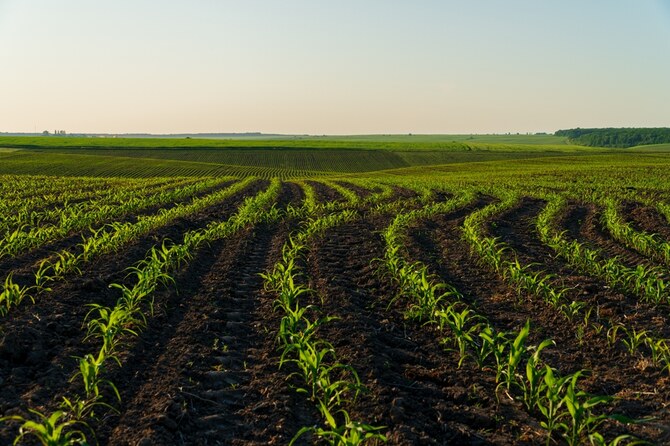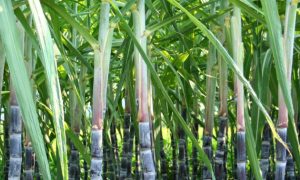Opening India’s Farm Market to U.S. May Trigger Rural Distress, Says Trade Think Tank

A NITI Aayog paper suggests tariff cuts on U.S. farm goods for an India–U.S. FTA, but GTRI warns this could harm India’s food security and farmers. Past trade mistakes, risks from subsidized imports, and GM contamination threats are cited. GTRI urges evidence-based policy and cautions against compromising India’s tariff autonomy and rural livelihoods.
India’s emerging trade dialogue with the United States has entered a sensitive phase with a new NITI Aayog working paper recommending tariff concessions on a wide array of U.S. agricultural products under the proposed India–U.S. Free Trade Agreement (FTA). The policy think tank’s May 2025 paper suggests reducing duties on items such as rice, dairy, poultry, soybean derivatives, corn by-products, and genetically modified (GM) soybeans, citing reasons ranging from supply shortages to strategic reciprocity. But a detailed counter-analysis by the Global Trade Research Initiative (GTRI) has raised sharp concerns, warning that these moves could fundamentally weaken India’s food security system and threaten the livelihoods of millions of farmers.
According to GTRI, the idea of using tariff reductions to bridge short-term supply gaps is deeply flawed and historically risky. The report points to India’s experience during the 1960s and 70s, when, under the General Agreement on Tariffs and Trade (GATT), the country agreed to bind import tariffs on rice, wheat, and skimmed milk powder at zero. These bindings, negotiated during a period of food dependence, became a major liability once India achieved self-sufficiency. By the 1990s, India was forced to renegotiate these bindings under GATT’s Article XXVIII. While it regained some policy space, this came at the cost of reducing tariffs on other sensitive products like apples, butter, and olive oil—leading to a surge in subsidised imports. GTRI cautions that repeating this mistake today could leave India dangerously exposed to global price shocks and future renegotiation challenges.
The proposed removal of tariffs on items like rice and pepper is especially fraught. While India is a major exporter of these commodities, global markets are shaped by the presence of heavily subsidised grain exports from countries like the U.S. and EU. These distortions have in the past devastated local agriculture systems in Africa. During periods of price spikes—such as 2005–2008 and 2010–2011—countries faced riots, inflation, and forced imports. In contrast, low-price periods that followed, often driven by U.S. or EU surpluses, led to a collapse in local farming activity and increasing dependency. GTRI warns that India, with over 100 million smallholder farmers, risks entering this same boom-bust cycle if tariff protections on staples are relaxed.
The risk is not merely economic. India’s public food procurement and minimum support price (MSP) systems, essential for food security and rural incomes, have been repeatedly challenged by industry groups like the USA Rice Federation. Concessions on rice or other staples could embolden such actors to intensify their WTO attacks against India’s food policies, undermining its ability to defend subsidies and procurement operations in future trade negotiations.
On dairy and poultry, NITI Aayog proposes replacing tariffs with reliance on sanitary and phytosanitary (SPS) standards. But the U.S. has long contested India’s SPS requirements, such as the cultural stipulation that imported dairy must come from animals not fed internal organs or blood. GTRI points out that India’s regulatory and enforcement capacity is weak, and that implementing and defending such SPS norms at the WTO is far more difficult than maintaining tariffs. Additionally, applying stringent SPS norms to imports would also apply them to domestic producers, potentially disqualifying many Indian farmers from their own market. This could allow better-capitalised foreign producers to flood Indian markets, displacing local supply.
The issue of genetically modified imports also raises alarm. NITI Aayog has suggested a “controlled model” for importing GM soybean seeds and corn by-products like DDGS, meant to be crushed near ports and used for oil extraction or export. However, GTRI argues that India’s fragmented logistics and weak regulatory oversight make such containment strategies unworkable. Once GM materials enter the country, the risk of them leaking into domestic agriculture systems is high. This could not only undermine public trust but also jeopardise exports to countries that ban GM contamination, leading to trade and reputational risks.
In the face of these concerns, GTRI strongly advises against rushing into tariff reductions without comprehensive, evidence-based consultation. The report calls for open and transparent engagement with state governments, farmer organisations, and trade experts. With over 700 million people dependent on agriculture, decisions made in trade policy must reflect long-term national interest, not short-term diplomatic or commercial expediency. GTRI also calls on NITI Aayog to publish a full position paper detailing the terms of the India–U.S. FTA, particularly the asymmetries in tariff reduction commitments. According to the report, India is being asked to slash its MFN tariffs while the U.S. is offering few, if any, reciprocal concessions.
For India, agriculture is more than just a sector—it is a lifeline for rural livelihoods, a pillar of food security, and a buffer against global market shocks. As global food markets grow increasingly erratic due to climate disruptions and geopolitical instability, India’s ability to manage its own agricultural economy cannot be outsourced or undermined. GTRI’s analysis makes clear that in the current global context, tariff flexibility is not a protectionist relic—it is a vital strategic tool. Giving it away lightly, especially under pressure from a trade partner with vastly different structural advantages, could cost India far more than it gains.
To Read more about Agri Commodity News continue reading Agriinsite.com
Source : Rural Voice
















